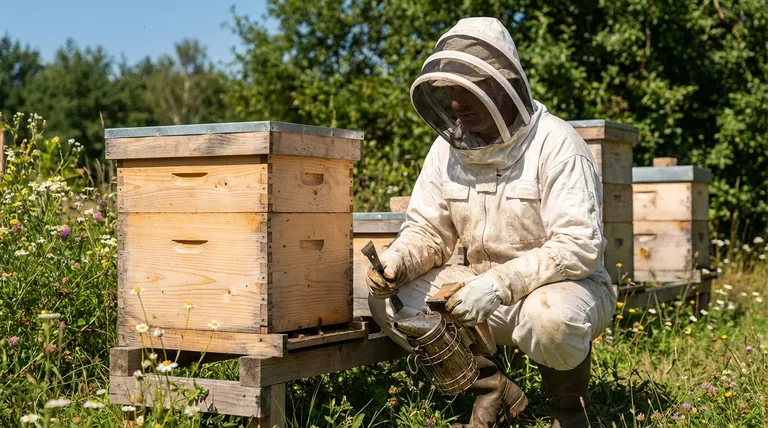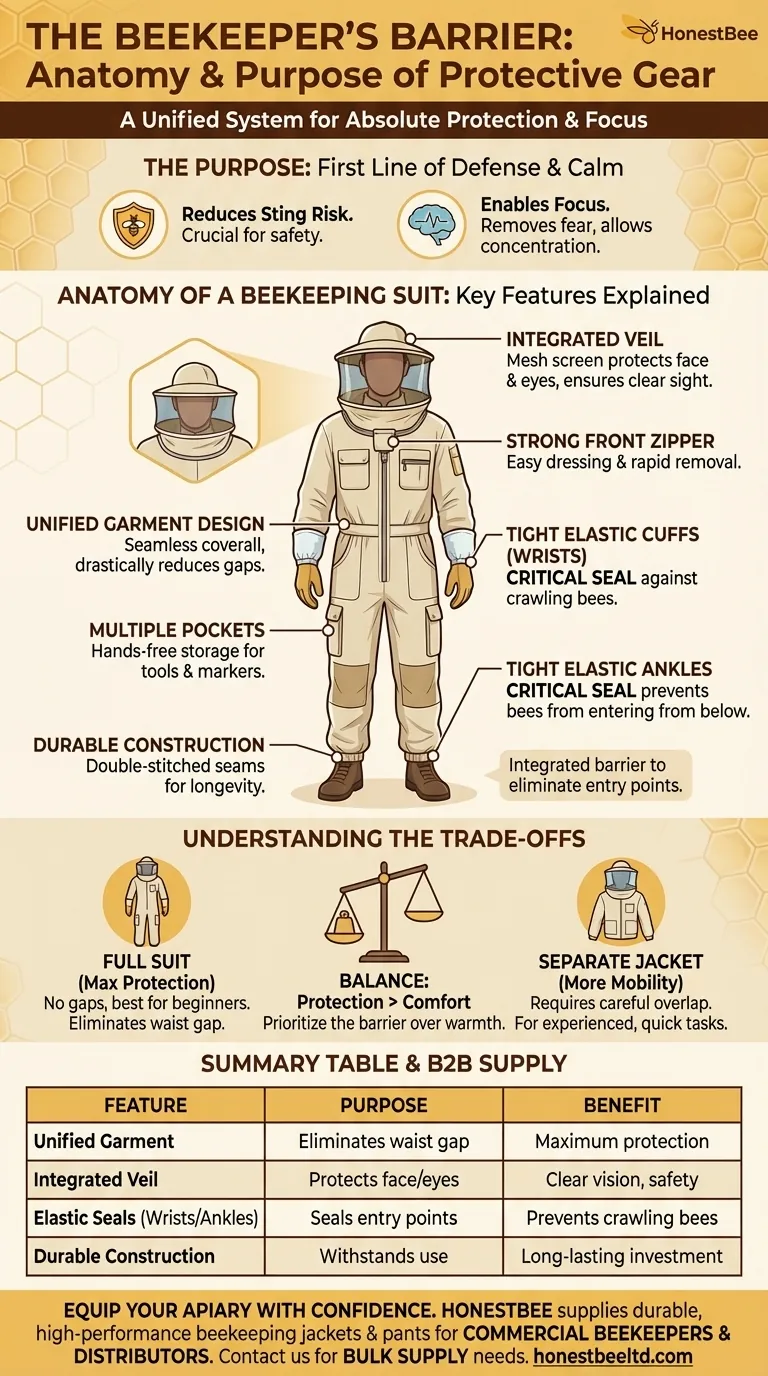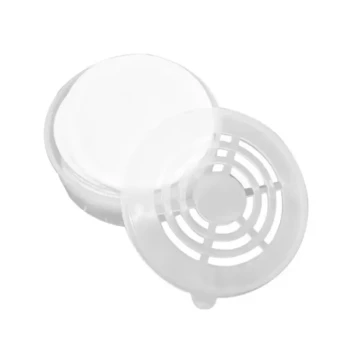At its core, a beekeeping jacket and pants are a unified system designed for absolute protection. Key features include a seamless connection between the jacket and pants to form a single coverall, a detachable veil to shield the face, strong front zippers for easy removal, and multiple pockets for tools. Critically, tight elastic bands at the wrists and ankles create a secure seal to prevent bees from crawling inside.
The specific features of beekeeping clothing are not arbitrary; they form an integrated barrier. The goal is to eliminate any potential entry points for bees, allowing you to focus on the health of your hive with confidence and safety.

The Purpose of Protective Gear
Your First Line of Defense
Protective clothing is the most essential barrier between you and bee stings. When bees feel their hive is threatened, they can become defensive.
Proper gear significantly reduces the risk of painful stings, which is crucial for safety and for maintaining a calm demeanor while working.
Enabling Focus and Calm
By removing the fear of being stung, protective gear allows you to concentrate on the delicate tasks of hive inspection and management.
This peace of mind makes the beekeeping experience more enjoyable and less stressful, which is beneficial for both you and the bees, who can sense anxiety.
Anatomy of a Beekeeping Suit: Key Features Explained
The Unified Garment Design
Many beekeeping suits connect the jacket and pants into a single piece, similar to coveralls.
This seamless design is intentional, as it drastically reduces the gaps where a bee could potentially enter, particularly around the waist.
Integrated Veil for Facial Protection
Jackets almost always include an attached or detachable veil. This mesh screen protects your face and eyes—the most vulnerable areas—while ensuring you have a clear line of sight into the hive.
Secure Closures and Seals
A strong zipper down the front allows for easy dressing and removal of the suit.
The most critical safety features are the tight elastic cuffs around the wrists and ankles. These seals are non-negotiable, as they are the primary defense against bees crawling up your arms or legs.
Built-in Practicality
Quality beekeeping jackets and suits feature multiple pockets. These are essential for holding hive tools, queen markers, and other small pieces of equipment, keeping your hands free for working with the frames.
Durable Construction
Look for features like double-stitched seams, which indicate a more durable garment that will withstand the rigors of regular use and washing. Proper fit and high-quality materials are also important for longevity and comfort.
Understanding the Trade-offs
Full Suit vs. Separate Jacket
A full, one-piece suit offers the highest level of protection and is strongly recommended for beginners. It leaves no chance for gaps to form at the waist.
A separate jacket and veil is an option for more experienced beekeepers who may be conducting quick inspections. While offering more mobility, it requires careful attention to ensure it overlaps properly with your pants.
Protection vs. Comfort
While essential, beekeeping suits are, by nature, warm. The thick material required to prevent stings can be uncomfortable on hot days.
This is the primary trade-off you manage. Lighter-colored suits can help reflect some heat, but you must always prioritize the integrity of the protective barrier over temperature comfort.
Making the Right Choice for Your Needs
Choosing the right gear depends entirely on your experience level and tolerance for risk.
- If your primary focus is maximum safety as a beginner: Opt for a full, one-piece suit to eliminate any potential gaps and build confidence.
- If your primary focus is mobility for quick tasks (and you have experience): A separate jacket with a veil can be a practical choice, provided you ensure a secure overlap with your pants.
Ultimately, the right protective clothing is the gear that empowers you to work safely and calmly with your bees.
Summary Table:
| Feature | Purpose | Benefit |
|---|---|---|
| Unified Garment (Coverall) | Eliminates waist gap | Maximum protection, no entry points |
| Integrated Veil | Protects face and eyes | Clear vision, safety for vulnerable areas |
| Elastic Cuffs & Ankles | Seals wrists and ankles | Prevents bees from crawling inside |
| Strong Front Zipper | Easy dressing and removal | Quick escape if needed |
| Multiple Pockets | Holds tools and equipment | Hands-free convenience during work |
| Durable Construction | Withstands regular use | Long-lasting investment |
Equip your apiary with confidence. HONESTBEE supplies durable, high-performance beekeeping jackets and pants designed for the rigorous demands of commercial beekeepers and distributors. Our wholesale-focused operations ensure you get the protective gear you need to work safely and efficiently. Contact us today to discuss your bulk supply needs and enhance your beekeeping operations.
Visual Guide

Related Products
- Wholesales Dadant Size Wooden Bee Hives for Beekeeping
- Professional Insulated Plastic Bee Hives
- Long Langstroth Style Horizontal Top Bar Hive for Wholesale
- Yellow Plastic Bucket Pail Perch for Beekeeping
- Automatic Honey Flow Beehive 4 Frame Mini Hive for Beekeeping
People Also Ask
- What are the characteristics of oil-based paint for beehives? Durability vs. Modern Practicality
- Why were wooden hives traditionally preferred? For Natural Beekeeping Aligned with Bee Biology
- What is the best place to keep bees? Find the Perfect Apiary Site for Your Hives
- What types of products are available for beekeeping needs? Essential Equipment for Apiaries & Distributors
- What is beekeeping equipment? Essential Tools for Commercial Apiaries & Distributors



















